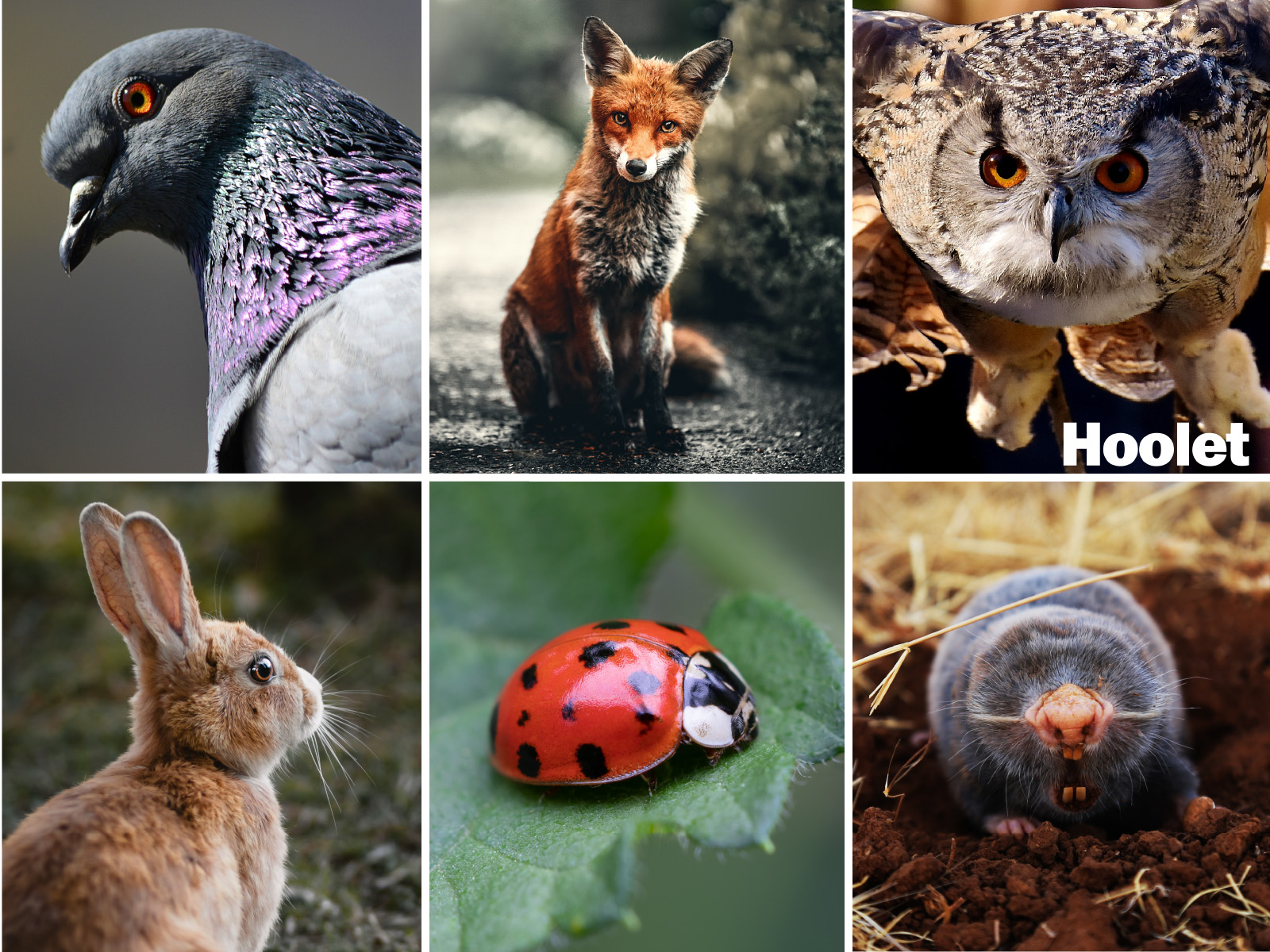Over the past few months, a series on Scots words for animals has been keeping us entertained across our social channels.
We’ve dived down quite a few linguistic rabbit holes (mappie bouries?), and some have queried whether we were making most of them up.
But no, diligent research has been carried out. And why?
Because Hoolet is the Scots word for an owl – and we love words.
And who couldn’t love the word “bubblyjock” and want to use it in conversation?
Brilliant beasties
But let’s start with some brilliant wee beasties.
First off, we give you the hairy oobit, or a caterpillar.
We tried to tie all these beasties in with Hoolet (the business) activities and for this one we imagined its wee legs
powering away underneath, as it heads determinedly in the direction it wants to go. A great analogy would have been a beautiful butterfly resulting from all that fierce energy.
Anyway, it turns out hairy caterpillars tend to emerge as moths. That’ll teach us.
Equally loveable is the foggie bummer, or the humble bumble bee.
The words seem almost descriptive. Another great example is the clockleddy, or ladybird.
A “clock” is a beetle, so a clockbee is a flying beetle and a clockleddy is a ladybird.
They’re also referred to as reid sodgers (red soldiers) or spottit redicoats, but the term clockleddy was immortalised in the Julia Donaldson story “Whit the Clockleddy Heard”
Nightmarish
Along the same lines is the forkie tail.
This got a lot of attention and frankly nightmarish childhood tales on the socials.

The forkie tail usually comes out at night and is called an earwig in English. For such a little animal this one has over 20 names in Scots, however versions of “gollach” – sometimes including “forkie” and “horny” – are the most common.
So-called from the forceps-like tail of the insect, the word is probably formed from a wrong syllabic division of “forkit”
tail rather than from forkie.
See, that all makes sense.
Ettercap (a spider) makes less sense. It also refers to a spiteful or ill-tempered person – go figure.
Some of these beasties need a better brand identity. Some positive PR. If only we knew somewhere they could find someone to rehabilitate their reputation.
As we always say, Hoolet can help. Even if in real life, a hoolet would make short work of most of these beasties.
Watching the birdies
Sticking with birds, you can picture our delight when we found out – just before Christmas – that a turkey is known as a bubblyjock. It’s almost onomatopoeic.
Another one of our early examples was a doo, or a pigeon or dove.
“Foo’s yer doos?” is a traditional North-east greeting – or “how are your pigeons?”
There is an equally standard response, which goes along the lines of “chavin’ awa” or “aye peckin’”.
There’s also a more specific doo, a cushie doo – or a wood pigeon.
Not to be confused with a clappy doo, or a mussel.
The word probably from Scottish Gaelic where clab means enormous mouth and dubh means black.
It refers particularly to the horse mussel, a black bivalve that is still quite familiar on the lower Clyde estuary.
Mythical
Staying in the sea, we found the selkie, or seal.
Seals are carnivorous, fin-footed, semi-aquatic, mostly marine mammals. And selkie is a diminutive for “selch” which strictly speaking means a grey seal.
In Celtic mythology, selkies were also fantastical beings capable of changing from seal to human form by shedding their skin.
Less myth, more legend is the story that our founder Joanna told us about her mother’s endearing turn of phrase, “what are you doing sitting there like a great puddock?”
Apparently a puddock is a frog.
She failed to mention whether there was an expected standard response to that question.
Bigger beasties
There were unsurprisingly quite a few of our furry friends mentioned, indeed we started with the futret.
It’s a ferret and did we mention our thorough research?
It pulled up some information gems as well as some worrying Google searches.
“Why do men put ferrets down their trousers?”

Moving swiftly on, we found the tod, or male fox.
As well as Tod being the protagonist of Disney’s 1981 animated feature film, The Fox and the Hound, the tod pops up in all sorts of places.
A todhunter is a foxhunter, and children could be found playing “hunt the tod” or hide and seek. A less well-known and equally lovely term is “tod mittans” or the foxglove.
Friend of neither of the previous two is the mappie, or rabbit.
The word is used especially as a pet name for a tame rabbit, or a bunny.
It can also mean to nibble with characteristic twitching of the lips, like a rabbit, hare or sheep.
Also a digger is the mowdie – or the mole.
“Digging for detail and always looking for the way forward”, we said in our increasingly desperate attempts to link these to a purpose.
See also social, strong and trustworthy, you can rely on a braw cuddie.
Yes, a cuddie is a horse.
Any lessons from Scots words?
So what have we learned from this exercise in searching out Scots words, other than the fact we love researching strange facts? And the point when it becomes wise to stop labouring a social campaign #ScotsWords
Well, you can always use them as inspiration to name a new business – #HooKnew that Hoolet would be so successful?
We knew that some of the words, like futret and puddock, were fairly well known.
Ferrets and frogs – what a great name for an online emporium…
Hoolet is the Scots word for an owl.
Wise and with an all-seeing eye, the owl has the perfect perch for perspective with an absolute focus on what needs to be done.
Want to find out more about what we do? Take a look here.
Hoolet is a strategic communications consultancy. Come say hello on Twitter at @hoolet_hoots, or follow us on LinkedIn. You can read more blogs here.

